Red eye puffer - Carinotetraodon lorteti
Scientific name: Carinotetraodon lorteti
Common name: Red eye puffer
Family: Tetraodontidae
Usual size in fish tanks: 5 - 6 cm (1.97 - 2.36 inch)
014
Recommended pH range: 6.6 - 7.1
Recommended water hardness: 3 - 13°N (53.57 - 232.14ppm)
0°C 32°F30°C 86°F
Recommended temperature range: 24 - 28 °C (75.2 - 82.4°F)
The way how these fish reproduce: Spawning
Where the species comes from: East Asia
Temperament to its own species: aggressive/territorial
Temperament toward other fish species: aggressive/territorial
Usual place in the tank: Bottom levels
Tank Requirements
Carinotetraodon lorteti, known as the Red Eye Puffer, is a challenging species best suited for experienced aquarists. A single fish requires a minimum tank size of 20 gallons (78 liters), ideally with a rectangular footprint to maximize floor space. These puffers are sensitive to poor water conditions, so heavy-duty filtration is necessary. The tank must be fully cycled with ammonia and nitrite levels consistently at zero.
Decorate the tank with dense plants, caves, and driftwood to offer plenty of cover and reduce stress. A darker substrate and subdued lighting will help simulate their natural habitat and encourage more natural behavior.
Behavior
Red Eye Puffers are nocturnal, becoming active during the evening and night. During daylight hours, they often remain hidden. When active, they exhibit inquisitive and intelligent behavior, constantly exploring their surroundings. They are known to recognize their keepers and may display interactive or even "friendly" behavior.
Without sufficient stimulation, these puffers may resort to glass surfing or pacing. Rearranging décor or adding more hiding places can help alleviate boredom.
Tank Mates
Red Eye Puffers are highly territorial and aggressive toward other fish, including other puffers. They are best kept alone in a species-only setup. Attempts at cohabitation almost always result in injury or death of tank mates.
Diet
This species is a strict carnivore. Offer a varied diet that includes frozen or live foods such as:
- Bloodworms
- Mosquito larvae
- Daphnia
- Snails (excluding Malaysian trumpet snails)
- Dwarf shrimp
- Clams and mussels
Although their teeth are not as prone to overgrowth as in other puffers, hard-shelled foods still help keep them in check. Do not feed fish or mammalian meat. Remove uneaten food promptly to avoid fouling the water.
Breeding
Breeding is possible in captivity. Males initiate courtship with displays and a circling "dance" around the female. Spawning typically occurs on fine-leaved plants or moss. After egg deposition, the male guards and fans the eggs until hatching. The female should be removed after spawning to prevent aggression from the male.
Sexing
Males are generally larger and more vividly colored than females. A key identifier is the red coloration of the dorsal fin in mature males.
Origin and Natural Habitat
Red Eye Puffers originate from Southeast Asia, particularly in Thailand, Vietnam, and Cambodia. In the wild, they inhabit slow-moving or stagnant freshwater bodies such as swamps, canals, and shaded forest streams. Their natural environment includes heavy vegetation and soft, slightly acidic water, making a peat-filtered tank a suitable setup for mimicking their habitat.
Lifespan
When kept under optimal conditions, Red Eye Puffers can live for 5–7 years.
Special Notes
These puffers prefer soft, slightly acidic water, though they can adapt to a wider range of parameters over time. However, they are extremely sensitive to elevated levels of ammonia, nitrites, and nitrates. Regular water changes and stable conditions are essential for their health and longevity.
Pictures and Content Credit
Images provided by aqua-fish.net in collaboration with jjphoto.dk. This profile was updated with support from Aquariadise.com.



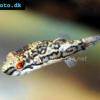 Striped
Striped  Malabar
Malabar 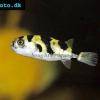 Amazon
Amazon 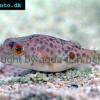 Red-spot
Red-spot 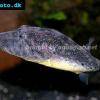 Bailey’s
Bailey’s 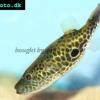 Thai
Thai 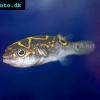 Figure
Figure 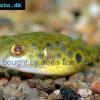 Fang’s
Fang’s  Green
Green  Coral
Coral 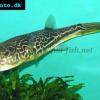 Giant
Giant 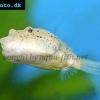 Congo
Congo 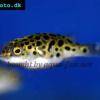 Green
Green 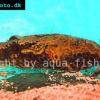 Humpback
Humpback 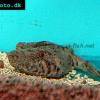 Mekong
Mekong 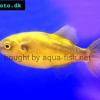 Bronze
Bronze